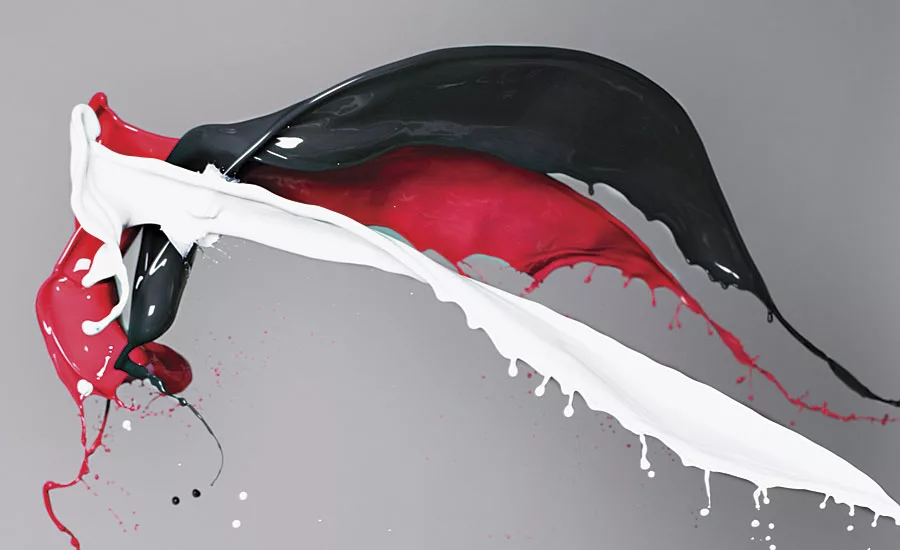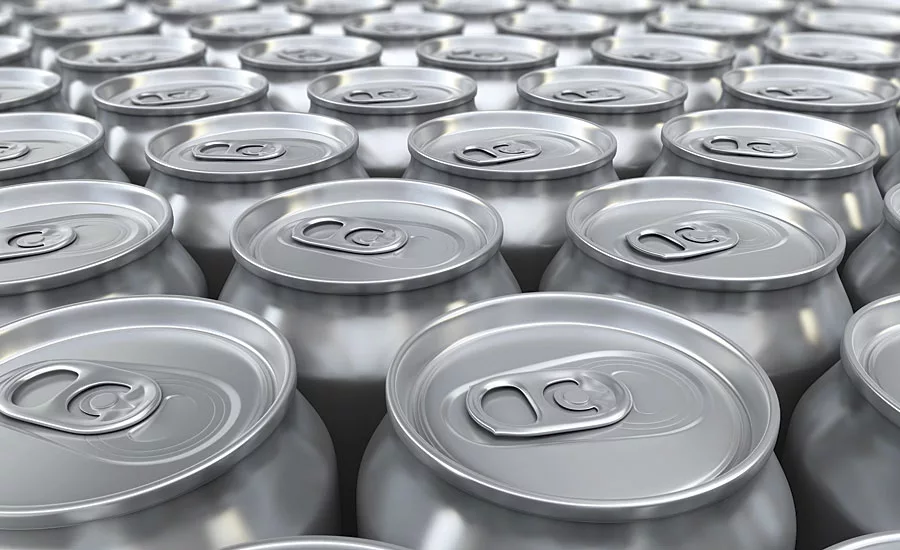Paints of Our Lives: Improving the Way We Live



Attempting to neatly describe today’s consumer is as dangerous as making broad characterizations of generational classes. Millennials aren’t always spoiled idealists. And the rest of us don’t always want to pay less and get more. But sometimes they are. And sometimes we do. The forces that drive our choices as consumers are as complex as we are. Yet despite how we (sometimes) behave, our “best selves” truly want the best for ourselves, others and our world. We may not always be purely ethical consumers, but a wealth of new access to information means we are becoming much more informed. Found within the complexity of the “I do what I do” phenomenon, there is a growing expectation for consumables that pose a minimal impact on human and environmental health. And an equally growing expectation that our systems of government – of law and order – will embrace the most scientifically sound way to keep us safe from harm.
Meeting these expectations is no new task in the coatings industry, where consumers blend superficial needs with pragmatic and meaningful wellness demands, and where countries are establishing new health and safety standards that require the coatings industry to continue its long history of successful re-invention and social responsibility.
The journey through coatings history is punctuated with scientific breakthroughs – from the invention of synthetic polymers for house paints to reduced VOC ingredients, and the development of water-based systems for formaldehyde abatement. Innovative thinking, and market and regulatory demand have tugged back and forth, making way for new and improved paints and coatings, as well as the mechanics and methods of innovation.
Faster, Better, Stronger
As consumers of information, we all feel the increasing speed of the market. Whether in anticipation of market trends, in response to consumer union rankings, or whatever motivates change, there is increased competitive pressure in the market to reformulate on a regular basis. As coatings scientists, we are confronted with an urgency to respond and increase the efficiency and speed of product development. Adapted from the pharmaceutical industry, high-throughput research (HTR) methodologies have significantly accelerated the innovation cycle in the coatings industry. The ability to mimic the benchtop in a hastened fashion is remarkable. But faster examination doesn’t automatically mean rapid success. An increased emphasis on data mining and modeling is growing in order to deliver formulation recommendations virtually without the need to formulate every paint on the benchtop. HTR will be essential to deliver the magnitude of data necessary to build predictive tools. Coatings manufacturers will begin to rely more heavily upon HTR tools to reduce formulation costs and establish a competitive edge. Additionally the availability of HTR methods will have a hand in shaping the landscape of independent, third-party testing and industry standards as the methods become recognized as more efficient, reproducible and statistically robust.
Few things are more tedious than watching paint dry. Nothing, however, is better for the science of coatings than putting paint in the rain. For more than 60 years, Dow has been using exterior exposure testing to assist in developing polymers and understanding formulating variables to enhance the performance of coatings. While accelerated laboratory testing may be a supplemental tool, evaluation of exterior exposures in different locations on multiple substrates and in different directions is critical to fully understanding long-term paint performance. Yet monitoring and evaluating thousands of test areas is a daunting and resource-intensive activity. Here again, we use technology to our advantage, courtesy of proprietary hardware and software. Robots can’t do my job just yet, but they can watch paint age over time, capture the data and the mode of failure. Science requires our minds, our hands and sometimes a little help from Mother Nature.
Lighting the Path to Innovation
Having access to advanced technology and testing resources is certainly important when it comes to coatings development, but this alone won’t make the grade. Coatings professionals need to also be mindful of the world beyond the lab that could lead them to their next great idea.
Meeting and Anticipating Change Demanded by Regulators and Consumers
Regulation has long been a key motivator for innovation in our industry. Yet lately, the voice of the consumer is growing in volume and impact. Through information shared on social media and the ever-present 24/7 news cycle, materials of concern are rapidly being brought to the forefront by everyone from mommy bloggers to celebrities as ingredients to remove from products we use every day. There seems to be no limit to perspectives shared about the next “undesirable” in our cabinets, cars and even coatings. The problem here lies in the fact that while we can remove today’s “materials of concern,” we don’t necessarily know what may be of concern tomorrow.
To address this, we opt for safer substitutions – substitutions that can satisfy regulatory or consumer preference when enough science or (sometimes) pseudo-science drives action. With the unhappy incumbent as the baseline, formulators and material suppliers must deliver replacements that achieve the same, if not better, performance. Thou shalt not impact application quality and price. And thou must offer sufficient evidence supporting improved environmental, health and safety profiles.
One of the first materials subjected to the power of the modern social era was Bisphenol A (BPA). Between consumer scrutiny and stricter governmental guidelines, a broad range of coating applications that traditionally included this chemical are now targets for alternative solutions. BPA in baby bottles sparked outrage several years ago. Today, food and beverage brand owners and their can makers are nearing the spotlight, as they find themselves under extensive social and regulatory pressure to deliver can coating options without the BPA-containing epoxy-based standard.
With CANVERA™ polyolefin dispersions and ROPAQUE™ opaque polymers, Dow has been able to offer options to provide high-performance alternatives to BPA-based solutions for both can and paper coatings. CANVERA technology serves as a binder for spray-applied replacement technology for epoxy coating systems that offers excellent adhesion, corrosion protection and flexibility without impact on flavor. Epoxy has long been the material of choice for can linings given its durability and consistent can and contents protective qualities, but this new technology offers a safer, sustainable coating that doesn’t skimp on performance and does so without the presence of BPA.
ROPAQUE opaque polymer, which was initially introduced in the 1980s as a partial replacement for titanium dioxide in architectural paint, has found new life in the world of thermal paper coatings. Paper products, including cash register receipts, tickets and labels, are often developed from thermal papers that contain BPA and/or sister chemical Bisphenol S (BPS) to produce images when heated. By using ROPAQUE NT-2900 opaque polymer for BLUE 4EST™ thermal paper, images can be created on thermal paper solely by the introduction of air voids in the paper coating and, more importantly, without the use of BPA and BPS. Not only is this technology a substitution for a so-called “undesirable,” but it also offers enhanced performance over conventional thermal paper options – the ability to print permanent and fade-resistant images.
While BPA seems to be dominating conversations surrounding materials of concern, it isn’t the only one being discussed when it comes to paper coatings. Research into the impact of fluorocarbons on humans and the environment has, in turn, led to increased consumer concern over the use of these materials. Consumers are demanding safer food packaging and, as a result, Dow recently introduced RHOBARR™ technology, a fluorocarbon-free oil and grease resistance barrier coating binder. Without sacrificing any of the protective barrier functionality, these binders offer hot block resistance and act as a fatty acid and liquid water barrier in a thin-film, flexible coating, all of which happens without the addition of fluorocarbons.
On the industrial side of coatings, PARALOID™ Edge resins remove two materials of concern: isocyanates from two-component polyurethane systems and formaldehyde from urea-formaldehyde systems, which are typically used in automotive refinishing and wood coatings. This new technology attains a difficult-to-achieve balance between having a long pot life for a feasible application time and having a fast cure time for a quick return to service. With these resins, formulators and applicators don’t need to sacrifice one property over the other in the quest to remove isocyanates and formaldehyde.
Improving Living Conditions Around the World
Whether you call them “smart” or “functional,” coatings that offer benefits beyond traditional performance and aesthetics continue to grow in both profitability and necessity.
According to a recent study, 30 percent of the world’s population is exposed to potentially deadly heatwaves for more than 20 days a year.1 In overpopulated developing nations with little access to air conditioning, how can people find respite from hours, days and weeks of oppressive heat? With climate change and extreme weather conditions creating more intense and frequent problems, how can we, as coatings professionals, play a role in offering relief?
In the 1980s, scientists conducted research on thermal management as it relates to coatings and introduced cool reflective roof coatings (CRRCs) in the United States. Since their initial market introduction, CRRCs have been developed and improved by a number of companies to help reduce internal temperatures in buildings, increase indoor comfort and potentially offer a longer life for roofs. These CRRCs can continue to improve the lives of millions of people as they are incorporated on new roofs and retrofitted onto older roofs, and are seeing increased use in areas with arid desert conditions such as the Middle East.
With the spread of illness and disease a worldwide problem, especially in developing nations, the rates at which these types of infectious pathogens can be spread within hospitals, senior care facilities, homes, hotels and other types of high-traffic areas can be extremely high. Recognizing a need in the marketplace to address this global health concern, Sherwin-Williams created Paint Shield, the first interior microbiocide paint with the ability to kill infection-causing bacteria two hours after contact.2 Nippon Paint Malaysia’s VirusGuard went one step further and was formulated to include both antibacterial and antiviral properties, targeting a number of illnesses including MRSA, Influenza A (H1N1) and E.Coli.3
Creating Connections in an Urban, Increasingly Affluent World
Rapid rates of urbanization and a growing middle class across the globe have led to a wide range of implications. As more and more people make their ways into cities, they start to demand and expect more – from their infrastructure, from their cars, from their paint, from everything.
For example, according to the Association for Safe International Road Travel, 1.3 million people die in road crashes each year, with upwards of 20-50 million injured.4 While car manufacturers remain focused on designing safer vehicles and cities look to smart technologies such as vehicle-to-vehicle or vehicle-to-infrastructure (V2X) capabilities, how can the coatings industry help improve road safety?
Road markings exist solely for the benefit of human safety. Today’s road coatings already include safety features such as retroreflectivity. FASTRACK™ acrylic waterborne binder for traffic paint offers this functionality in a safer, more sustainable way. Not only does this technology retain light-reflecting glass beads and retroreflectance performance longer than its solventborne counterparts, it also allows for a reduction in VOCs, and reduced solid waste, primary energy use and human toxicity during the manufacturing process.
To further the development of coatings for increased road safety, research has been done to develop smart traffic paints that glow at night using luminescent powder and paints that change colors when exposed to icy weather, thus helping to reduce ice-related traffic accidents.5 Conversations in the industry are ongoing about the potential for coatings to house sensors that could report information about adverse weather conditions, accidents and other critical data points back to city managers for analysis and action for improved public safety.
Smart coatings for cars themselves have taken shape in a number of ways over the past few years. Self-healing coatings for vehicles, which were once just an idea in the lab, have since become a commercialized product. In 2014, Nissan tested a car that possessed the ability to keep itself clean through the use of a super-hydrophobic and oleophobic paint.6
Little known fact: China produces the vast majority of the world’s freight containers – truly massive structures in a massive country dealing with massive levels of pollution, population growth and urbanization. These containers are exposed to some of the worst Mother Nature has to offer: extreme sun, heat, storms and salt spray. Corrosion is the biggest concern, as it compromises both the vessel and its contents, so freight containers are typically coated with highly effective, yet VOC-emitting, solventborne paints. That is, until recently, when environmental regulations started pushing for lower overall VOC emissions in China. In response, the China Freight Container Association announced in 2016 its plan to make the conversion from solventborne to waterborne paints in all factories in China. While the conversion to waterborne technologies will require an investment, it will not only address the governmental pressure, but also increase application ease, lower health risks for workers and, most importantly, reduce the amount of greenhouse gases and other pollutants going into the air.
The Journey Ahead
Many among us are fortunate to embrace paint purely for its less weighty value propositions. We take peace in the beauty of color. We give praise for the ability to scrub crayon off the wall. But that doesn’t mean that the casual consumer lacks complexity, nor does it underestimate the complex health and environmental issues present in, and outside, our personal bubble. Coatings have long straddled the intersection of superficial and substantial. The chemistry behind it has been remarkable. And our ability to continue innovating is far from over. The consumer wants it all. The commonwealth wants what’s best for all. As scientists, we keep proving that we can meet that high standard. And the work is far from over. I can’t wait to see what comes next.
™ Trademark of The Dow Chemical Company (“Dow”) or an affiliated company of Dow
™ BLUE 4EST is a trademark of Papierfabrik August Koehler SE
References
1 http://www.nature.com/nclimate/journal/v7/n7/full/nclimate3322.html?foxtrotcallback=true
2 http://www.cleveland.com/business/index.ssf/2015/10/sherwin-williams_patented_germ.html
3 https://www.nipponpaint.com.my/products/topcoat/VirusGuard
4 http://asirt.org/initiatives/informing-road-users/road-safety-facts/road-crash-statistics
5 https://www.wired.com/2014/11/awesome-glowing-roads-highways-future/
6 http://www.motorauthority.com/news/1058845_video-self-healing-polymers-the-future-of-car-paint-tech
Looking for a reprint of this article?
From high-res PDFs to custom plaques, order your copy today!




